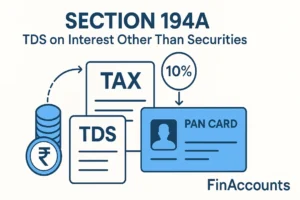GST Registration Limit: Minimum Turnover for GST Registration
Goods and Services Tax (GST) is a comprehensive indirect tax introduced in India in 2017 to replace multiple taxes like VAT, service tax, excise duty, and others. The GST Council, which consists of finance ministers from different states, determines the tax rates applicable to various goods and services.
Businesses that cross the minimum turnover threshold must register under GST and file returns accordingly. This article provides a detailed overview of GST registration limits, the classification of states, compulsory registration criteria, and how to calculate turnover for GST purposes. If you need GST Registration in Delhi, Saptax Hub LLP offers expert services to help you comply with GST laws seamlessly.
What is the Minimum Turnover Limit for GST Registration?
The GST registration requirement is based on annual turnover:
- For Goods: Businesses must register if annual revenue exceeds ₹40 lakhs in normal category states and ₹20 lakhs in special category states.
- For Services: The threshold remains ₹20 lakhs for normal category states and ₹10 lakhs for special category states.
Voluntary registration is also an option for businesses below the threshold, which can help them claim input tax credits and gain better market credibility.
GST Registration Threshold Overview
| Turnover | Category of States | Registration Requirement |
|---|---|---|
| More than ₹40 lakhs | Normal Category States | Registration Mandatory (Goods) |
| More than ₹20 lakhs | Special Category States | Registration Mandatory (Goods) |
| More than ₹20 lakhs | All States | Registration Mandatory (Services) |
| More than ₹10 lakhs | Special Category States | Registration Mandatory (Services) |
Classification of States for GST Turnover Limits
Normal Category States (Threshold: ₹40 Lakhs)
- Andhra Pradesh, Bihar, Gujarat, Haryana, Jharkhand, Karnataka, Kerala, Madhya Pradesh, Maharashtra, Odisha, Punjab, Rajasthan, Tamil Nadu, Telangana, Uttar Pradesh, West Bengal, and others.
Special Category States (Threshold: ₹20 Lakhs for Goods, ₹10 Lakhs for Services)
- Arunachal Pradesh, Manipur, Meghalaya, Mizoram, Nagaland, Sikkim, Tripura, Uttarakhand, Jammu & Kashmir, and Ladakh.
Who Must Compulsorily Register for GST?
Regardless of turnover, some businesses and individuals are mandated to register for GST:
- Interstate suppliers of goods and services.
- Casual taxable persons and non-resident taxable persons.
- E-commerce operators and suppliers selling through e-commerce platforms.
- Persons required to deduct TDS/TCS.
- Businesses under Reverse Charge Mechanism (RCM).
- Input Service Distributors (ISD).
- Online service providers offering services to unregistered individuals in India.
How to Calculate GST Threshold Limit?
To determine if a business meets the GST registration threshold, the following factors should be considered:
- Annual Turnover – Sum of total sales value, including both taxable and exempt supplies.
- Aggregate Turnover – Combined turnover of all business entities under the same PAN across India.
- Export Revenue – Earnings from international sales must be converted to INR for GST compliance.
- Interstate Sales – Transactions with customers in different states are subject to IGST.
If your turnover exceeds the GST threshold, timely registration is crucial to avoid legal penalties. Even if you are not required to register, voluntary GST registration can help with input tax credit claims and smoother business operations.
For hassle-free GST Registration in Delhi, consult Saptax Hub LLP—your trusted partner in tax compliance. Contact us today!




